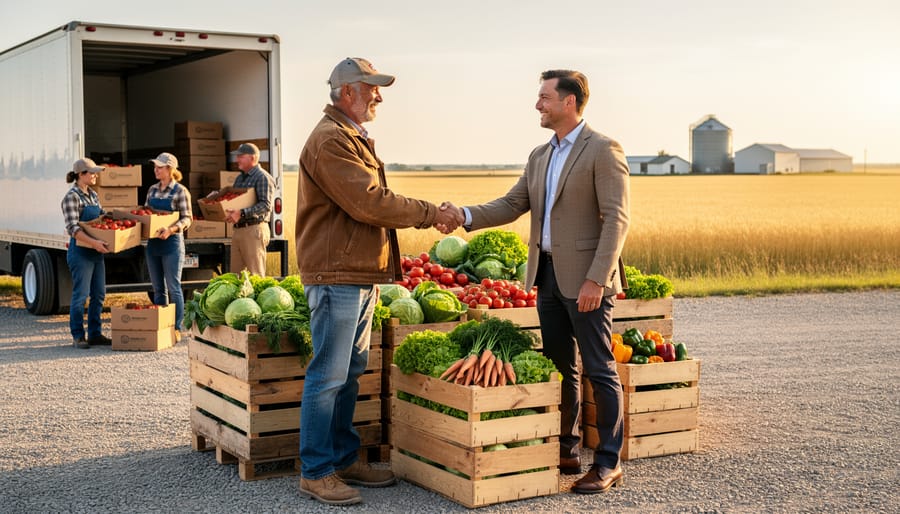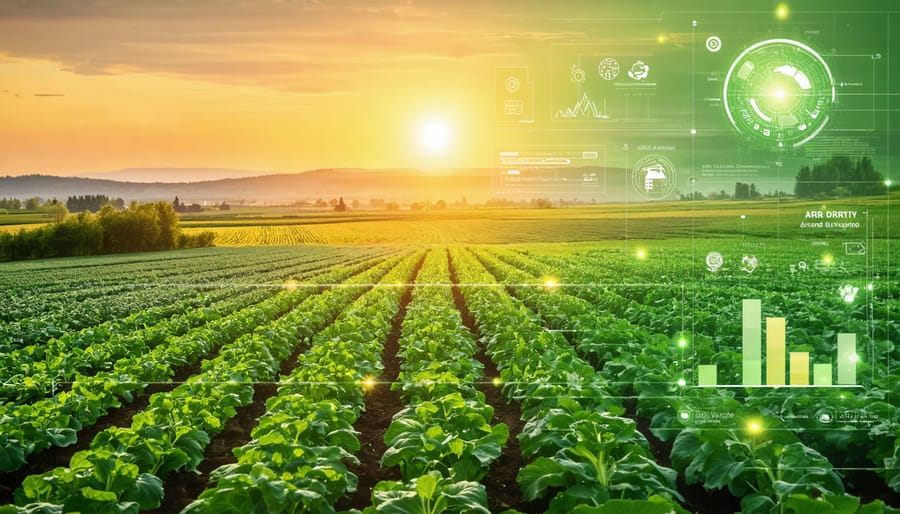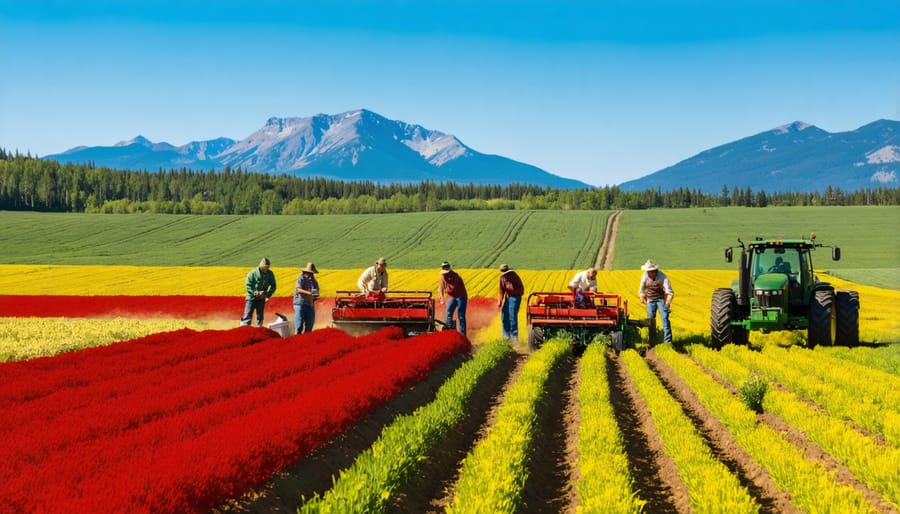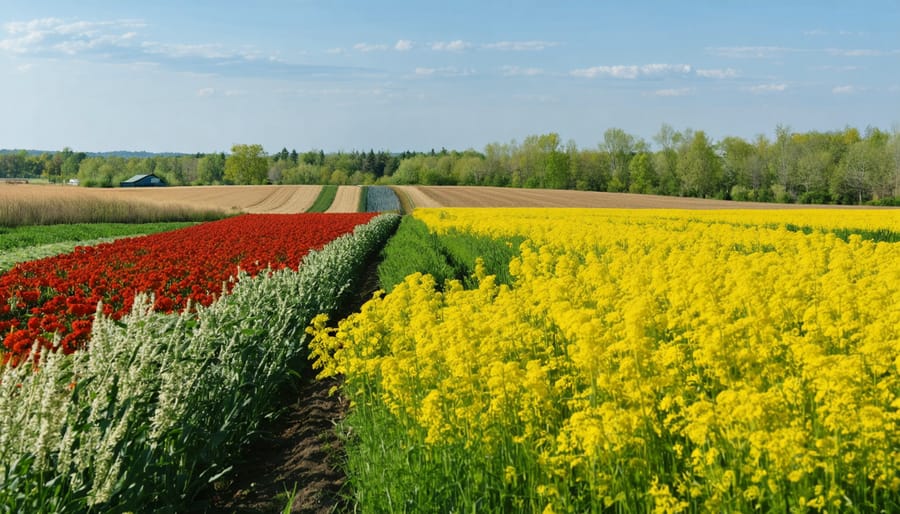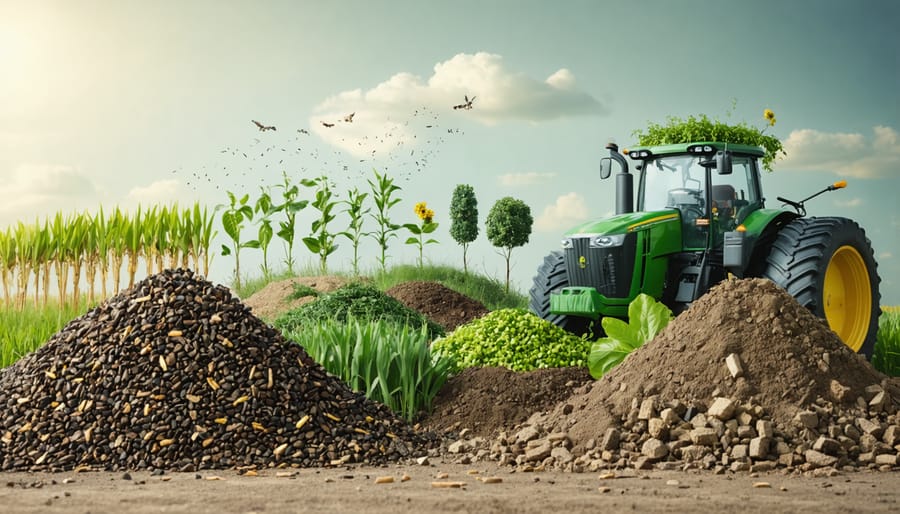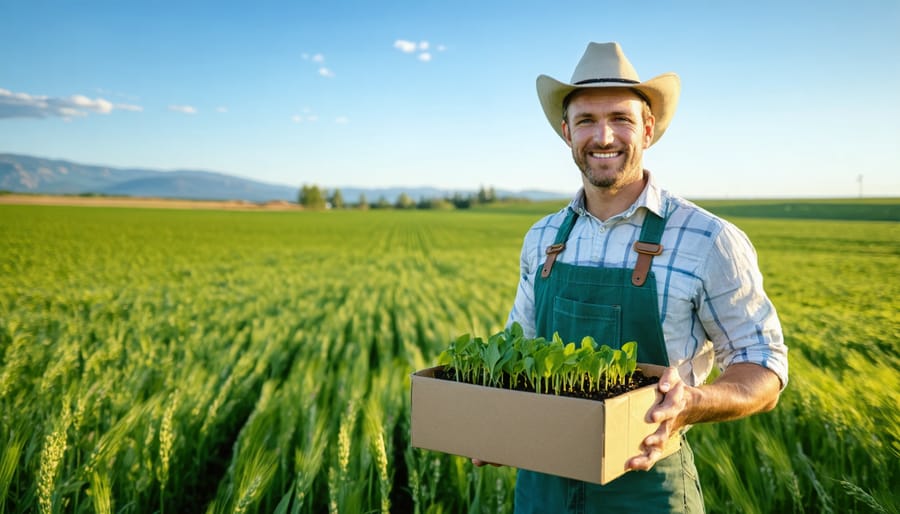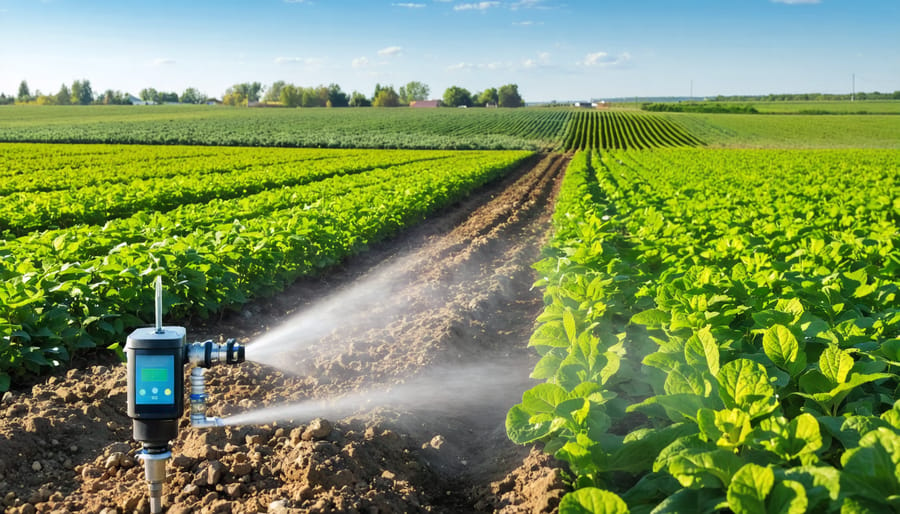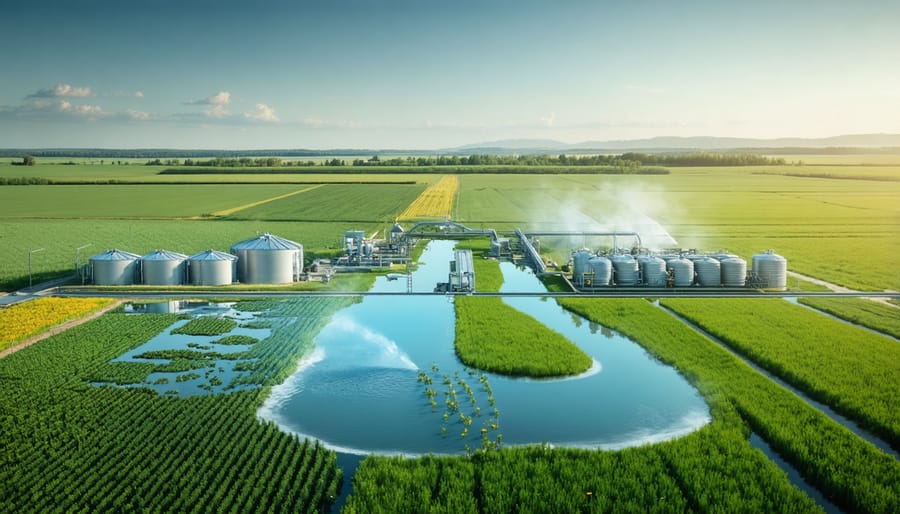Transforming Canada’s forests through ecological sustainable practices isn’t just about preservation—it’s about creating resilient ecosystems that support both environmental health and economic viability. Across Alberta’s diverse forestland, innovative farmers and foresters are pioneering methods that maximize timber yield while safeguarding biodiversity and soil health for generations to come.
By integrating traditional Indigenous knowledge with modern scientific approaches, sustainable forestry practices are revolutionizing how we manage our woodland resources. These methods focus on selective harvesting, natural regeneration, and maintaining complex forest structures that mirror nature’s own patterns. The result: healthy forests that continue to provide timber, support wildlife, protect watersheds, and sequester carbon.
For Canadian landowners and forestry professionals, ecological sustainable forestry represents more than environmental stewardship—it offers a practical path to long-term profitability. Through careful planning and adaptive management, these practices create robust forest systems that remain productive while building natural resilience against climate change, pests, and market fluctuations.
Our forests hold the key to a sustainable future, but only if we manage them with both wisdom and purpose. The transition to ecological sustainable forestry isn’t just an option—it’s becoming an essential strategy for maintaining healthy, productive woodlands in an era of environmental change.
The Alberta Advantage: Integrating Trees with Agriculture

Climate-Smart Tree Selection
In Alberta’s diverse climate zones, selecting the right tree species is crucial for successful ecological forestry. White spruce and lodgepole pine thrive in the northern regions, while Douglas fir and ponderosa pine are better suited to southern areas. Consider your local soil conditions, annual precipitation, and frost-free days when making your selection.
Native species like trembling aspen and balsam poplar offer excellent adaptability and support local wildlife populations. These species have naturally evolved to withstand Alberta’s challenging climate conditions and contribute to biodiversity enhancement.
When planning your forest, incorporate a mix of fast-growing species like hybrid poplars for earlier returns, alongside slower-growing hardwoods like maple and oak for long-term value. This approach creates a resilient, multi-layered canopy that better withstands climate fluctuations.
Work with local nurseries and forestry experts to source seedlings that are genetically adapted to your specific region. They can provide valuable insights about growth rates, disease resistance, and optimal planting densities for your selected species. Remember to consider future climate projections when making your selections, as trees planted today will need to thrive in potentially different conditions decades from now.
Soil Health Benefits
Integrating sustainable forestry practices into agricultural operations significantly enhances soil quality and carbon storage potential. Through soil health management practices, Alberta farmers have witnessed remarkable improvements in their land’s productivity and resilience.
The presence of trees and diverse vegetation creates a natural cycle of nutrient exchange. Leaf litter and root systems contribute to organic matter buildup, while mycorrhizal networks facilitate nutrient distribution throughout the soil. Research from the University of Alberta shows that integrated forestry can increase soil organic carbon by up to 25% compared to conventional farming methods.
Trees also protect soil structure by reducing erosion and compaction. Their root systems create channels for water infiltration, improving moisture retention and reducing runoff. This is particularly valuable in Alberta’s semi-arid regions, where water conservation is crucial.
Moreover, the interaction between trees and soil microorganisms enhances nitrogen fixation and nutrient cycling, reducing the need for synthetic fertilizers. Local farmers report decreased input costs while maintaining or improving soil fertility through these natural processes.
Supply Chain Integration Success Stories
Local Timber Production
Alberta’s farmers are revolutionizing local timber production by implementing innovative circular supply chain practices that benefit both their operations and the environment. Many farmers are establishing woodlots on underutilized portions of their land, creating sustainable sources of timber while maintaining ecological balance.
Local success stories include the Thompson family farm near Rocky Mountain House, which manages a 40-hectare woodlot producing construction-grade lumber and furniture-quality hardwoods. Their selective harvesting approach ensures continuous forest cover while generating steady income throughout the year.
Farmers are also forming regional cooperatives to share processing equipment and market access. The Central Alberta Woodlot Association, for example, helps members coordinate harvesting schedules, share portable sawmills, and connect with local builders and craftspeople. This collaborative approach reduces individual investment costs while maximizing resource efficiency.
Value-added processing is becoming increasingly common, with many farmers installing small-scale drying kilns and milling operations on-site. This vertical integration allows them to offer specialty products like custom-cut lumber, fence posts, and decorative wood products directly to local markets.
By maintaining control over the entire production process, from seedling to finished product, farmers ensure both environmental sustainability and economic viability. This approach also reduces transportation costs and carbon emissions while supporting local employment and rural economic development.
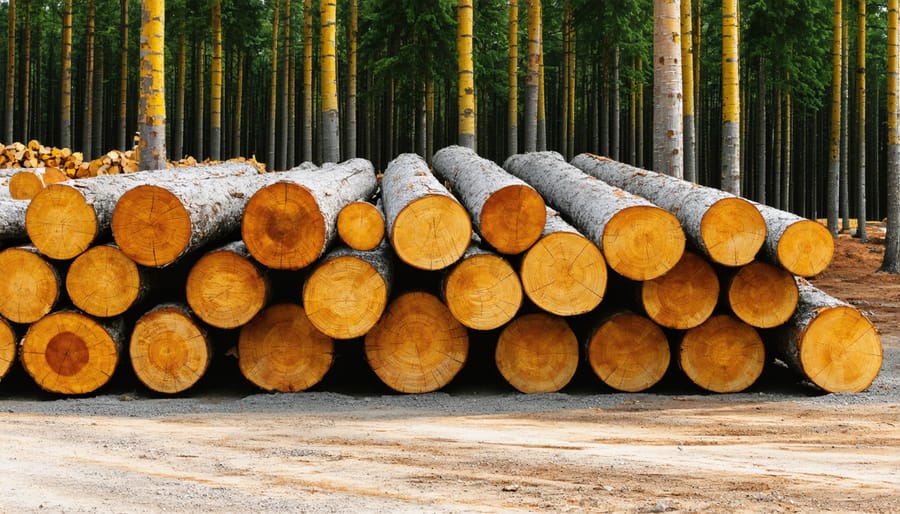
Non-Timber Forest Products
Beyond timber harvesting, Alberta’s forests offer abundant opportunities for sustainable income through non-timber forest products (NTFPs). These valuable resources can significantly boost farm revenue while maintaining ecological balance. Many local farmers have successfully integrated NTFP collection and cultivation into their forestry operations, creating diverse income streams throughout the year.
Common NTFPs in Alberta include wild mushrooms, particularly morels and chanterelles, which fetch premium prices in local markets and restaurants. Medicinal plants like Devil’s Club and various indigenous herbs present opportunities for value-added products. Seasonal offerings such as maple syrup from Manitoba maple trees and wild berry harvesting have become profitable ventures for many landowners.
The Christmas wreath and decorative market provides significant seasonal income, utilizing pine boughs, cedar branches, and decorative moss. Some innovative farmers have developed partnerships with local artisans who create value-added products from bark, pine cones, and other forest materials.
To get started with NTFPs, consider:
– Conducting a forest inventory to identify existing resources
– Researching local market demands and pricing
– Obtaining necessary permits and certifications
– Developing sustainable harvesting practices
– Building relationships with local buyers and processors
Remember to maintain detailed records of harvesting activities and monitor areas to prevent over-collection. Many successful NTFP operations in Alberta began small and expanded gradually based on market response and resource availability.
Economic Benefits for Alberta Farmers
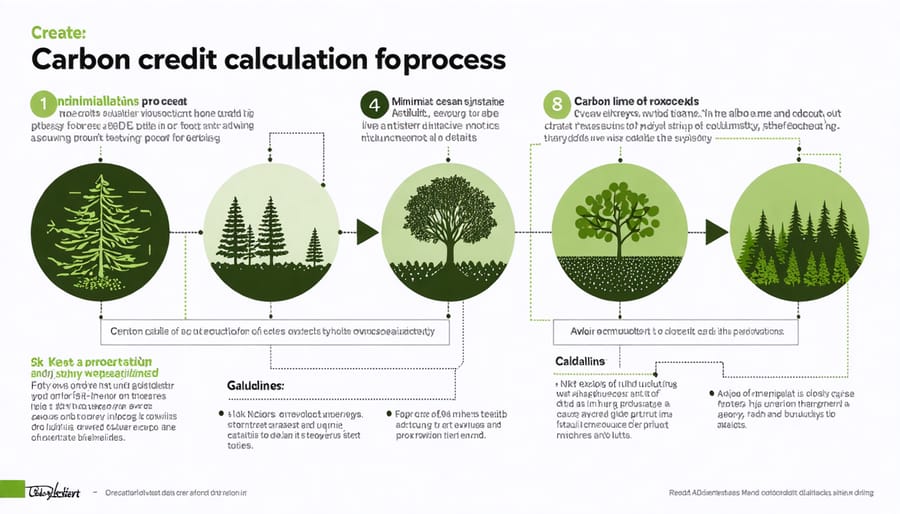
Carbon Credit Opportunities
Carbon credit markets present a valuable opportunity for Alberta farmers practicing sustainable forestry management. By implementing effective carbon reduction strategies, farmers can generate additional revenue while contributing to climate change mitigation.
The Alberta Carbon Offset System recognizes forestry projects that sequester carbon through activities like tree planting, improved forest management, and agroforestry. Currently, carbon credits trade at approximately $50 per tonne in Alberta’s compliance market, with prices expected to rise as Canada moves toward its 2030 climate goals.
To participate, farmers need to register their projects, establish baseline measurements, and follow approved protocols for carbon sequestration verification. Local agricultural extension offices provide support in navigating these requirements. Several Alberta farmers have successfully earned between $5,000 and $15,000 annually through forestry carbon credits, while simultaneously improving soil health and biodiversity on their land.
Consider working with carbon project developers or joining farmer cooperatives to reduce administrative costs and maximize returns from carbon credit programs.
Value-Added Products
Value-added forestry products offer significant opportunities for sustainable forest operations in Alberta. Through certification programs like Forest Stewardship Council (FSC) and Sustainable Forestry Initiative (SFI), producers can access premium markets and increase their revenue while maintaining ecological integrity.
Local success stories include the Whitefish Lake First Nation’s forestry operation, which produces certified sustainable lumber products commanding 15-20% higher market prices than conventional alternatives. Their value-added processing facility creates custom architectural elements, specialized wood components, and high-end finishing materials.
By implementing sustainable practices, forest managers can develop niche products such as specialty woods for furniture making, certified building materials, and biochar for agricultural applications. These products not only generate higher returns but also support local employment and strengthen regional supply chains.
Many Alberta forestry operations are now exploring innovative products like cross-laminated timber and engineered wood products, which meet growing demand for sustainable construction materials. These value-added initiatives typically require initial investment in certification and processing equipment but deliver long-term economic and environmental benefits for both producers and communities.
Implementation Framework
Planning Your Transition
Transitioning to sustainable forestry practices requires careful planning and a phased approach. Start by conducting a thorough assessment of your current land use, soil conditions, and existing tree species. Document these findings and set realistic goals for your transition timeline, typically spanning 3-5 years.
Begin with a small pilot area of 1-2 hectares to test different approaches and learn from the experience. Select native tree species that are well-adapted to Alberta’s climate, such as white spruce, lodgepole pine, or trembling aspen. Consider incorporating complementary understory plants that can provide additional revenue streams while supporting forest health.
Create a detailed implementation schedule that accounts for seasonal variations. Spring planting usually occurs from mid-May to early June in Alberta, while site preparation should begin the previous fall. Establish monitoring protocols to track progress and adjust your strategy as needed.
Develop relationships with local forestry experts and connect with other farmers who have successfully implemented sustainable practices. The Alberta Woodlot Extension Program offers valuable resources and networking opportunities. Calculate your initial investment needs, including seedling costs, equipment, and labor, and explore available grants or funding programs through provincial agricultural initiatives.
Remember to maintain detailed records of all activities, observations, and outcomes. This documentation will prove invaluable for future decision-making and potential certification processes. Start small, learn continuously, and scale up your sustainable forestry practices as you gain confidence and expertise.
Resource Management
Effective sustainable resource management in forestry requires a thoughtful combination of traditional knowledge and modern technology. Here in Alberta, successful forest managers employ various tools to maintain healthy woodland ecosystems while meeting timber production needs.
Geographic Information Systems (GIS) mapping helps track forest health, growth rates, and harvest schedules across different sections of land. This technology allows farmers and foresters to make data-driven decisions about when and where to harvest or replant.
Regular forest inventories using drone technology and ground surveys help monitor tree species diversity, understory vegetation, and wildlife habitat quality. These assessments guide selective harvesting practices that maintain forest structure while providing economic benefits.
Many Alberta farmers use precision forestry equipment that minimizes soil disturbance during harvest operations. Low-impact machinery and careful timing of operations help protect the forest floor and maintain soil health for future growth.
Regeneration planning is equally crucial, with many operations maintaining on-site tree nurseries to ensure appropriate species selection for replanting. Local seed collection programs help preserve genetic diversity and ensure trees are well-adapted to our climate conditions.
Computer modeling tools help predict long-term forest growth patterns and optimize harvest schedules. These forecasts enable managers to balance economic needs with ecological preservation, ensuring sustainable yields for generations to come.
The adoption of ecological sustainable forestry practices presents Alberta farmers with unique opportunities to enhance their operations while contributing to environmental stewardship. By integrating sustainable forestry management into existing agricultural systems, farmers can create additional revenue streams through selective harvesting, carbon credits, and ecosystem services. The benefits extend beyond economic gains, including improved soil health, enhanced biodiversity, and increased farm resilience against climate challenges.
As our province continues to lead in agricultural innovation, the time is right for Alberta farmers to embrace these sustainable practices. The success stories from early adopters across the province demonstrate that ecological forestry can coexist with and enhance traditional farming operations. Through proper planning and management, farmers can maintain productive woodlots while supporting wildlife habitat and protecting water resources.
We encourage Alberta farmers to take the first step by assessing their woodlots and consulting with local forestry experts. Provincial resources and support programs are available to help you begin this journey. Consider joining local farmer networks and participating in workshops to learn from peers who have successfully implemented these practices.
By embracing ecological sustainable forestry, you’re not just investing in your land’s future – you’re contributing to Alberta’s legacy of responsible land stewardship. Together, we can build a more sustainable and prosperous agricultural sector that benefits both current and future generations of farmers.


